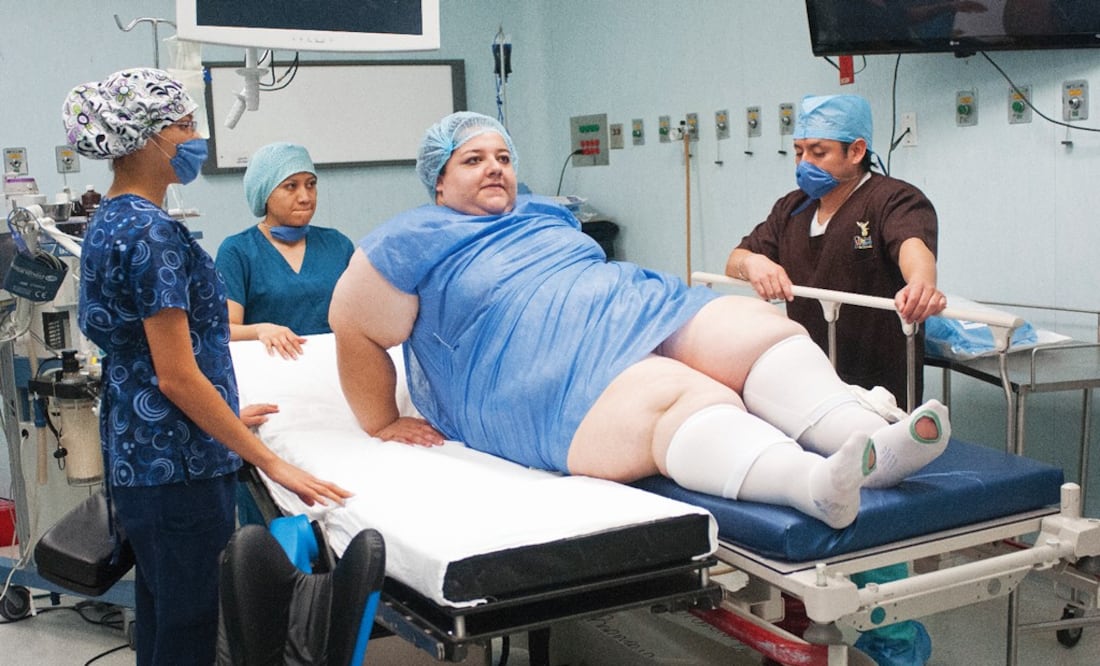Más Información

Sheinbaum responde a Trump sobre declarar a cárteles como organizaciones terroristas; rechaza injerencia extranjera

PAN exige renuncia de Rubén Rocha Moya; Claudia Sheinbaum sigue protegiéndolo en “complicidad vergonzante”

No cesaremos ni nos rendiremos en nuestro llamado a la paz y justicia: Iglesia; pide ser persistentes en exigencia

Con reformas laborales, expertos ven estrategia de Morena; van a fortalecer su número de simpatizantes
In Mexico , one in every three adults has obesity , therefore, the country is the first place in obesity worldwide , according to the Organization for Economic Co-operation and Development (OECD) , after dethroning the U.S. six years ago.
In an interview with EL UNIVERSAL , Luis Zurita Macías Valadez , an expert on weight-loss surgery , said that the main challenge faced by the country is acknowledging obesity in its three levels as a disease , because “it's not just being chubby ,” we have to understand that this is a chronic degenerative disease that can't be cured, it can only be controlled.”
Class 3 obesity
, considered as the riskiest, can be controlled through weight-loss surgery .
Numbers from the Food and Agriculture Organization of the United Nations (FAO) indicate that between 2012 and 2016 , this disease increased among the Mexican population over 18, by increasing from 20.5 to 24.3 million people.
The bariatric surgeon who studied at the UNAM and the McMaster University , in Ontario , Canada , explained that obesity is classified into three levels: 1, 2, and 3 and it is obtained by measuring the body mass index (BMI) , “that is, how many kilos will my height resist,” he explained.
An overweight person will have a BMI between 25 a 29.9 ; the class 1 obesity or low-risk obesity will have a BMI between 30 and 34.9 ; the class 2 obesity, moderate-risk , is present when the BMI is between 35 to 39.9 , and class 3 obesity, known as morbid obesity , is present when the person has a BMI over 40.
“This is the easiest way to measure obesity and adapt a treatment based on a multifactorial attention, with the support of a nutritionist, psychologist, an internal medicine doctor , and the surgeons , in case of needing surgery but it is important to emphasize that no matter the level of obesity in the patient, they will have to correct their habits because miracles don't exist. ”
Zurita Macías
also explained that being obese increases the risk of suffering other diseases , “such as a chronic condition,” because there are over 80 diseases related to it, such as diabetes, high blood pressure, reflux, infertility, cancer, cardiovascular diseases , and in some cases, depression .
In 2012 diabetes , which is associated with obesity , turned into the most lethal disease in Mexico . By 2016 , it had caused over 100,000 premature deaths , and the former Health Ministry, José Narro Robles , claimed it had caused more deaths than the Mexican Revolution , which lasted 10 years.
The adequate treatment depends on the class obesity but Zurita Macías said that not only people who weight over 200 kilos need weight-loss surgery such as the gastric sleeve or the gastric by-pass to control the disease because the less weight there is to lose, the easier it is to achieve it.
“It's not necessary for a person to weight 200 kilograms for them to be sick , we have to consider that we aren't very tall in this country, then a woman who is 1.55 meters and weights 72 kilos has class1 obesity. If you weight 84 kilos it is class 2 obesity, and with 96 kilos, she would be morbidly obese, we don't think that the morbidly obese are those who have 100 or 200 extra kilos and that we're only chubby ,” he said.
The statistics confirm this panorama because according to the Pan American Health Organization , Mexico is one of the main consumers of ultra-processed foods in the hemisphere by annually eating 214 kilos o f processed food by person, which also contributes to the problem.
Also, the cost of the treatments for diseases derived from obesity will increase from USD $806 million in 2010 to USD $1,200 million in 2030 , and USD $1,700 in 2050.
gm







